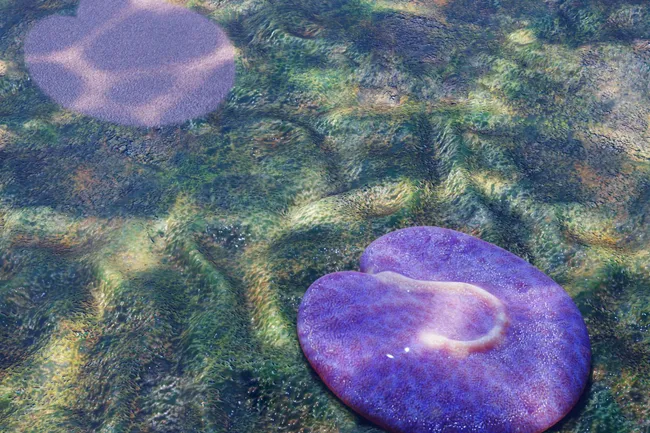A backward question mark shape on the creature’s back reveals early animal evolutionary history.
A newly discovered animal from over half a billion years ago, found in what is now the Australian outback, provides the earliest evidence of an asymmetrical body, according to a recent study.
The creature, named Quaestio simpsonorum, lived 555 million years ago and was able to move along the ocean floor like a “miniature marine Roomba,” feeding on microscopic algae and bacteria. However, it had a remarkable feature: a “backward question mark”-shaped protrusion on its back. This is the earliest known example of an asymmetrical body, a critical development in the evolution of complex life forms.
Fossils of Quaestio were uncovered in South Australia’s Nilpena Ediacara National Park, an area that has long yielded significant fossil finds. While the park is known for revealing some of the earliest complex animal fossils, researchers said that nothing like Quaestio had been seen before. This asymmetry would have been an evolutionary milestone during the Ediacaran period (635 to 541 million years ago), predating the Cambrian explosion.
A 2016 paper in Philosophical Transactions of the Royal Society B describes the ability to develop asymmetry as a “remarkable phenomenon,” enabling more complex body structures than a purely symmetrical form. For instance, asymmetry allowed for the placement of organs like the heart and liver on opposite sides of the human body.
“These Ediacara biota can provide us with valuable insights into early developmental processes,” said paleobiologist Scott Evans from Florida State University, the lead author of the study. He added that the same genetic mechanisms that produce left and right sides in modern animals likely operated in Quaestio.
Additionally, the fossils revealed evidence of movement, with tracks found behind one of the Quaestio specimens, suggesting that it moved across the ocean floor while feeding.
“The animal is roughly palm-sized with a question-mark-shaped feature at its center, clearly defining its left and right sides,” said Evans. “This type of organization is unique for fossils from this period.”
Co-author Mary Droser, a paleontologist at the University of California, Riverside, emphasized how significant the discovery is. “It offers profound insights into the early development of animal life on Earth,” she noted. “As we search for life on other planets, we can look back at how life unfolded on our own.”
